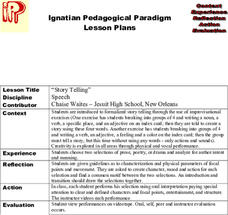Curated OER
English Grammar: Parts of Speech
A good overview of the basic parts of speech, this presentation is ideal for a junior high class that likes flashy animation and bright colors. The concepts are complete, but simple enough to lend well to lecture notes. Use the slide...
Curated OER
Grammar Lesson Plan: Simple Past vs. Present Perfect
What's the difference between the present perfect and simple past? Have your class practice identifying and using both of these verb tenses through pair activities, whole-class discussion, and a worksheet.
Curated OER
Running on Faith
Young scholars listen to the song, "Running on Faith" by Eric Clapton. They listen for the present perfect verb tense used in the song and then practice writing sentences in this verb tense and others previously studied.
Curated OER
The Direct Object
What exactly is a direct object? Use this resource to introduce direct objects to your middle and early high school classrooms. The section at the top explains the part of speech, and then there are 20 sentences below for learners to...
Curated OER
What's Going On? -- Present Progressive in Photos
Magazine photos of people in action provide opportunities for beginning and intermediate English learners to employ the present progressive (continuous) verb tense. Partners describe what people are doing and share their sentences with...
Curated OER
Visible Speech: What is a Sentence?
Use this straightforward presentation as a basic guide to your grammar unit. With explanations of the parts of a simple sentence (subject, verb, direct object), the slideshow is a good way to reinforce students' prior knowledge about...
Curated OER
Story Telling
Students, through the use of 4 different improvisational exercises, discover how to tell effective stories. They chose 2 selections and perform them, using the interesting methods they learned.








